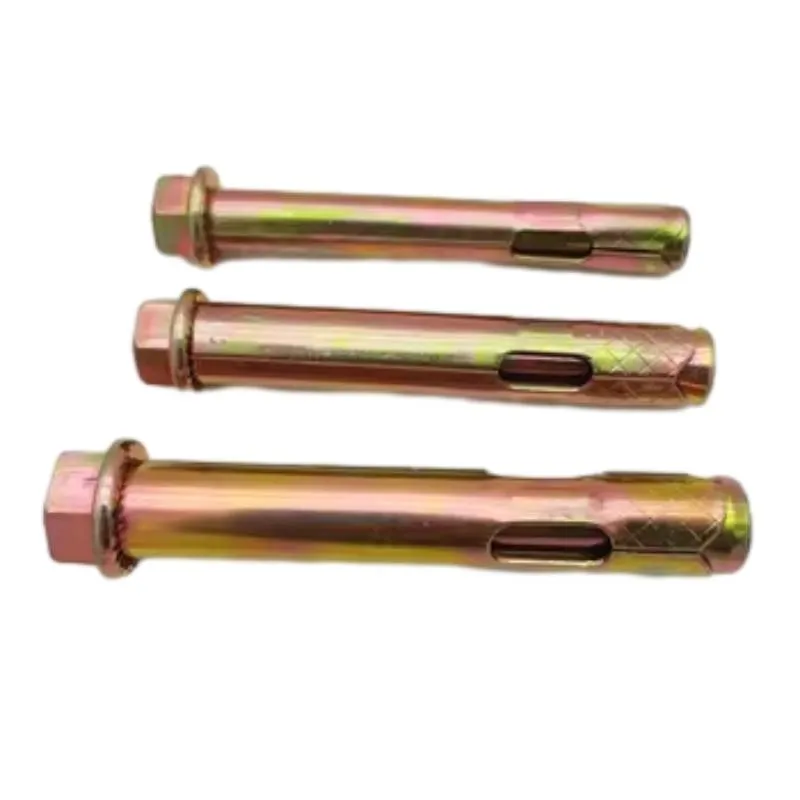Dec . 28, 2024 20:33 Back to list
Cost of Chemical Anchor Bolts and Market Trends in Construction Industry
The Price Dynamics of Chemical Anchor Bolts Factors and Trends
Chemical anchor bolts have gained significant traction in the construction and engineering industries due to their superior performance in load-bearing applications. They provide robust anchoring solutions for various substrates, including concrete, masonry, and stone. As demand grows, understanding the pricing of chemical anchor bolts becomes essential for contractors, engineers, and project managers. This article explores the factors influencing the price of chemical anchor bolts, recent trends, and considerations for purchasing.
Understanding Chemical Anchor Bolts
Chemical anchor bolts are typically used in environments where mechanical anchors may not provide sufficient holding power or where environmental conditions may compromise the integrity of traditional anchors. They consist of a bolt or rod and a resin that serves as an adhesive when mixed and injected into a pre-drilled hole. Once the resin cures, it creates a strong bond between the anchor and the substrate, making it ideal for heavy loads and dynamic forces.
Factors Influencing the Price of Chemical Anchor Bolts
1. Material Quality The composition of the chemical anchor bolt profoundly impacts its price. High-quality materials, such as stainless steel or special alloys resistant to corrosion, typically command higher prices due to the enhanced durability they provide. Conversely, lower-quality materials may be more affordable but can compromise safety and performance over time.
2. Type of Resin The resin used in chemical anchoring systems varies in cost depending on its formulation and intended application. Epoxy resins generally offer superior bonding strength and temperature resistance, but they can be more expensive than acrylics or polyester resins. Choosing the right resin for the specific project requirements is crucial, as it directly affects both the cost and performance of the anchoring system.
3. Load Capacity Chemical anchor bolts are designed to carry different load capacities, with certain bolts engineered for heavy-duty applications. The load capacity can significantly influence pricing; the greater the capacity, the higher the cost. Contractors must consider the required load capacity when selecting an anchor bolt, ensuring safety without overspending.
4. Supply and Demand Like any commodity, the price of chemical anchor bolts is influenced by market dynamics. Fluctuations in demand, potentially driven by increased construction activities or specific engineering projects, can lead to price increases. Additionally, supply chain issues or disruptions in production can affect availability and, consequently, pricing.
chemical anchor bolt price

5. Brand Reputation Established brands with a reputation for quality and reliability often price their products higher than lesser-known manufacturers. While it might be tempting to opt for cheaper alternatives, the long-term benefits of investing in reputable brands can outweigh the initial cost, particularly in critical applications.
Recent Trends in Chemical Anchor Bolt Pricing
In recent years, the construction industry has seen an uptick in the use of chemical anchor bolts, driven by advancements in technology and increased awareness of their benefits. As the market expands, manufacturers are innovating to enhance the performance of their products, which can lead to varied pricing strategies.
Moreover, sustainability has become a focal point for many manufacturers. Companies are investing in eco-friendly materials and production processes, which can affect prices due to the initial investment costs. However, as these practices become more mainstream, prices may stabilize or even decrease as technology scales.
Purchasing Considerations
When purchasing chemical anchor bolts, it is critical to balance cost with quality and performance. Here are some key considerations
- Project Specifications Understanding the specific demands of the project, including load requirements, substrate material, and environmental conditions, is essential for selecting the right chemical anchor bolt. - Cost-Benefit Analysis Conducting a thorough cost-benefit analysis can help determine the most economical solution without sacrificing quality.
- Supplier Research Investigating multiple suppliers can yield a better understanding of the market price range and help identify the best deals without compromising on quality.
In conclusion, the pricing of chemical anchor bolts is influenced by a plethora of factors ranging from material quality to market dynamics. As the construction industry continues to evolve, so too will the products available, making it essential for stakeholders to stay informed about pricing trends and to make educated decisions that align with their project's requirements. Understanding these dynamics can ensure that projects are delivered efficiently, safely, and within budget.


